How about making sure your World Book Day Celebrations have inclusive and representative impact too?
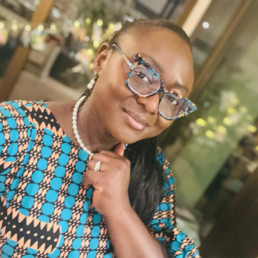
Written by Ndah Mbawa
Ndah runs Happier Every Chapter, a literacy service committed to helping schools and families improve diversity awareness and reading attainment through library diversity audits and the provision of diverse, inclusive and representative bestsellers for children. Her passion for decolonising mindsets within the school-to-workplace pipeline and supercharging the will/skill to read is shared by her teenage daughters, Kirsten & Aiyven.
It’s a little known fact that children start to form biases like racial bias much earlier than we think. For instance, from as early as 3 – 6 months, a baby’s brain can notice racial differences in the people around them. By the time they are 2, most children have soaked up stereotypes about race and may express these with one way or another. By 4, children can directly express race based prejudice or bias by teasing. And, by age 12, many children become set in biased thoughts, actions and decisions. Makes you think about what’s in the school-to-workplace pipeline doesn’t it? One doesn’t need to look further than the Ashford School incident for hard and gravely worrying evidence of such biased actions.
World Book Day provides a great opportunity to be more intentionally inclusive and it doesn’t always have to come down to dressing up. It’s never too early to begin the work of anti-racism & diversity awareness or to help your school setting make progress in conscious equality even as you promote the love of reading. With 34.5% of primary age pupils in the U.K being from minority ethnic backgrounds, diversity will not be the issue for a lot of school settings. How included these pupils feel and consequently how much of a sense of belonging they have will often be the issue. Somewhere in those corridors, a significant amount of pupil engagement is lost. How will you use events like World Book Day to further drive home the message that all are welcome and all belong?
Here are some tips to celebrate World Book Day in a more inclusive way:
📖 Start a book, an anthology and encourage children from different ethnicities or cultures to contribute short stories from their heritage. It will be a great way to uphold this year’s theme of making it ‘your’ World Book Day.
📖 Read stories with a diverse range of characters making sure that these are not limited to ethnic and cultural representations but also include other forms of diversity like gender, ability, neurodiversity, family set-up, sexual orientation etc. When stories featuring diverse characters are told with authenticity, it helps children develop empathy and inclusion giving them an opportunity to see themselves and the world around them in the books they read.
📖 Where possible, ensure the diverse titles selected / included in your World Book Day list are written by own voice authors. As much own voices are not always entirely representative of everyone within that group, it will for the most part foster better connection with the stories as children will not only see themselves in the books but will also be able to relate to the person behind the words thus giving confidence that the worlds created or described are represented in the most genuine light possible. The most powerful advantage of reading own voice books, has got to be that the stories are often told in a way that shines the light on the nuances and subtle differences within that group which can help dispel the stereotypes, generalisations and harmful single stories we may have become so attached to.
📖 For author visits around World Book Day and beyond, engage authors who represent diverse groups or voices. The phrase “We can’t be what we can’t see” will not be new to most of us. Having a face-to-face or virtual encounter with someone we can relate to in one way or the other, is a powerful way to make the right impact.
📖 Promote the use of World Book Day £1 tokens to buy books with diverse characters or books on anti-racism, diversity and inclusion. Being an Ally: Real Talk About Showing Up, Screwing Up, and Trying Again by Shakirah Bourne & Dana Alison Levy is a fabulous choice.
📖 Educate children on how World Book Day is celebrated around the world.
📖 Encourage children to proudly own their heritage by asking them to dress up as their favourite character from one of their cultural folk tales.
Let’s make it a “WORLD” Book Day as the name suggests.
Decolonising educational spaces: Lunar New Year 2023 reflections

Written by Isabelle Pan
Isabelle Pan is a secondary teacher. She is of Chinese heritage, grew up in France and England, and has studied in Scotland and California. She is from besea.n, Britain’s East and South East Asian Network, and is also working for MA Consultancy. Her interests are in equity in education, promoting books by authors of marginalised backgrounds to young people, and dance. She can be found at @readingwith.misspan (Instagram), and @mspanlanguages (Twitter)
For 3 of the 5 East and South East Asian Lunar New Year festivals, New Year’s Day was on Sunday 22 January this year (Spring Festival, Seollal and Tet), with some countries celebrating for 2 weeks until the Lantern Festival. To bring awareness to the festivals, besea.n (Britain’s East and South East Asian Network) published some Lunar New Year school resources which are culturally sensitive and accurate, and include lesson plans, assemblies, reading lists and form time resources to schools.
In my own school, I presented 3 assemblies, to Years 7, 8 and 9. These were my 1st assemblies ever in my teaching career. Needless to say, I was terrified in the leadup to them.
I had thought about doing assemblies on East and South East Asian (ESEA) cultures before, but though I may be a teacher who presents to 28 students a lesson 5 times a day, and a dancer who has often got up on stage in front of hundreds, speaking to a room of 300 young people for ten minutes was a little too daunting. I avoided materialising this idea, for fear of students being disengaged, or worse, racist.
Naturally, I was hugely nervous on the day. But what surprised me was how, as soon as I spoke into the mic, my nerves faded away. Being able to stand in front of an accumulated total of 900 students, to share with them the traditions of the 5 LNY festivals as well as my own family’s celebrations, and to see students engaging with the topic – this has been such a joy.
The assembly talked through the similarities between the 5 festivals as well as the unique traditions of each festival. Lunar New Year festivals in East and South East Asia mainly come under the following five types:
- Spring Festival – China, Taiwan, Hong Kong, Malaysia, Singapore, Philippines, Indonesia, Myanmar, Thailand, Cambodia, Brunei, Macau
- Tết (Tết Nguyên Đán) – Vietnam
- Seollal – South Korea, North Korea
- Losar – Tibet
- Tsagaan Sar – Mongolia
In the assembly I also spoke about the growing tendency for the festivals to be more inclusively referred to as Lunar New Year (rather than just Chinese New Year) as an umbrella name for the five festivals, and to reflect just how many communities celebrate the festival. In addition, I featured photos and videos of my family celebrating in London but also my uncles, aunts, and cousins celebrating in China. There are many misconceptions about LNY and so the goal of my assembly was to give a fuller, clearer, and more sensitive view of the five festivals.
I was touched by the positive reception these assemblies had. Afterwards, students and staff congratulated me on the assembly, told me what they learnt, asked me more questions about LNY, and students I didn’t know greeted me and wished me a happy Lunar New Year in the corridor. One colleague told me ‘thank you for your assembly, it was really informative. I have a Korean guest staying with me and now I know to wish her a happy new year this Sunday’. Children told me ‘Miss now I know we should call it Lunar New Year and not Chinese New Year’.
I staunchly believe in decolonising our education systems, and the way the students (and staff) responded to this assembly is just another piece of evidence that such a change is desired and needed by our students. Young people want to learn more about a variety of cultures – it interests them, it enriches their minds, challenges them to think critically, and builds connection and empathy.
For the students and staff I presented to, this was only 1 assembly. It will not completely overhaul their belief systems. Even on the day I wrote this post, 2 students made ignorant comments with regards to East and South East Asian cultures, in front of me.
The effect such comments have on you does not disappear, but as a teacher you learn to take things less personally. It is still disheartening to hear such comments, but it reflects more on the other person than on you. And it also highlights the fact that education about ESEA cultures and communities is just so dire in this country. The education about ESEA communities in our system needs to exist – I cannot even say it needs to improve, as something needs to exist before it can be improved – in order to challenge anti-ESEA attitudes.
Though schools may occasionally speak on racism in PSHE and assemblies, the nuance is not yet there in many schools. Even when discussing anti-Black racism, I have seen resources that contain traumatic images or videos, triggering Black students who may be in the room. And painfully for me as an ESEA educator, I’ve noticed that issues facing ESEAs are often missing from resources about racism.
I wouldn’t say it’s the duty of ESEA people to speak up, as there shouldn’t be that kind of burden, but I also think change will be so much more powerful with ESEA communities believing we can take up space and speak up for ourselves in schools.
Equally, non-ESEA colleagues are also crucial. A colleague in the Y8 team, who is not ESEA, is the one who had convinced me to do the Y8 assembly, then convinced me to do the Y9 one, and then I thought, ‘I might as well do the Y7 one too’. I’m grateful for her encouragement and her belief that this was an important topic.
Throughout my career, students have always asked me “Miss, where are you from?” I never told them as I didn’t know what they would do with that information, and this fear heightened with every racist experience I had in school. But with these assemblies, I finally very publicly shared stories from my Chinese heritage and family. I was proud of my Chinese heritage.
My nerves which come with talking about ESEA cultures or even showing photos of ESEA faces will not simply fade away with delivering one assembly, because young people (and adults) will continue to make ignorant comments. But I feel increasingly better-equipped, motivated, and empowered to help young people overcome prejudices towards ESEA communities, and hope that there can be a movement to decolonise our education system, so that future ESEA educators and students can be publicly proud when talking about their ESEA heritages.
Why I pretended my dyslexia wasn’t a big deal - my experiences as a dyslexic teacher.

Written by Catrina Lowri
Catrina Lowri is the founder of Neuroteachers and a neurodivergent teacher, trainer, and coach. As well as having 22 years’ experience of working in education, she also speaks as a dyslexic and bipolar woman, who had her own unique journey through the education system.
When I had already been teaching for about 10 years, I met a pair of grandparents at a friend’s barbecue. They had just received some devastating news; their 9-year-old grandson had been diagnosed with dyslexia.
They told me this in hushed voices, as if they were ashamed.
Although, their reaction was not unusual (97% of respondents in one survey viewed dyslexia negatively *), I was taken aback. Did this mean I should be ashamed or devastated about my own neurodivergence?
I did my best to reassure the couple that their grandson would be fine. I told them lots of successful people, like Richard Branson and Tom Cruise are dyslexic. Although he might need extra support, their grandson could get GCSEs and A levels if he wanted. They seemed reassured. Then I told them I was a dyslexic teacher.
Their reaction astounded me even more than the shamed hush had done previously. They were over the moon at my success! The grandfather toasted my talents, and the grandmother gave me a hug. They both treated me like I had just climbed Mount Everest. I couldn’t fathom why.
Until that point, I had never considered my achievements anything special. Yes, I’m a dyslexic teacher who went on to gain a master’s degree but was that out of the ordinary? I knew no other dyslexic teachers, but they must exist. I’ve always disliked it when people say I’ve ‘overcome’ my dyslexia. I haven’t. I’m still as dyslexic as I was the day I was born ( it’s genetic). I’ve just found ways around it. Most of which involve the use of technology.
I used to downplay my attainment in a matter-of-fact fashion. I disliked people who made ‘ a big deal’ of their dyslexia. My dyslexic friend, and I used to joke that we would write a book called ‘So you’re dyslexic? Just live with it!” As if all you had to do was keep calm and carry on.
I have talked before about my experiences at teacher training, where another student commented that he believed dyslexia was a middle class camouflage of a lack of intelligence. That must have stuck because, up until my chance meeting with these grandparents, I had just shrugged off my neurodiversity (ND) and downplayed my success.
After meeting my fellow barbeque guests, however, I changed my attitude. No, it hasn’t been easy to forge my career, firstly as a schoolteacher and now as a private specialist teacher and trainer. Yes, I do find several aspects of the job harder because of my ND. And yes, I am proud of my achievements.
I’m now 23rd years into my career, I’ve met hundreds of colleagues, yet I know very few ND teachers and even fewer dyslexic ones. My next step is to try and find us all support and recognition so that we can be good role models to ND children. And perhaps inspire the next generation of ND educators.
Reference Dr Kate Griggs ‘ The Creative Brilliance of Dyslexia’ https://www.ted.com/talks/kate_griggs_the_creative_brilliance_of_dyslexia
Building trust: working with Gypsy, Roma & Traveller students

Written by Christian Johnson
Christian works as a tutor with GRT (Gypsy, Roma and Traveller) students for Open Doors Education and Training, and is also a Policy and Campaigns Officer for The Traveller Movement.
I’m a tutor working for Open Doors Education and Training (ODET), a community interest company and educational provider offering funded and tailored education to Gypsy, Roma and Traveller children and young people. Having worked for ODET for over two years, one of the things we often hear from schools and other referral bodies, be that local authorities or youth service providers, is that they don’t know how to engage with different communities from Gypsy, Roma and Traveller backgrounds.
This is something which is unfortunately reflected in the data. When it comes to education, GRT (Gypsy, Roma, Traveller) communities have the lowest attainment rates of any ethnic group in the UK as well as some of the highest fixed term exclusion rates (21.26% for Gypsy/Roma in 2018-19 and 14.63% for Irish Travellers vs. 5.36% of all pupils) from UK schools. These figures are compounded by the well-known correlation between low educational attainment and exposure to the criminal justice system, often referred to as the ‘School to Prison Pipeline’, which extends to the GRT population. Almost 10% of children in the youth estate identified as GRT, which is extremely concerning when we consider GRT only constitute between 0.5 – 1% of the UK population.
In trying to address these widening disparities, we recently released an evaluation of one of educational programs, ‘Tutors for Young GRT’, in partnership with Leeds Beckett University titled ‘Building Trust, Stepping Together’. Through stories, poems and songs, researchers captured the voices and thoughts of a large cohort of GRT students studying with Open Doors Education across the country, distilling their findings into cogent and concise reflections on what works and what doesn’t. These conclusions represent fertile ground for other teachers and those working within education to develop their own approaches to engaging with young GRT.
Tutors for Young Gypsy, Roma and Travellers
In the wake of the pandemic and in response to the data available, ODET’s ‘Tutors for Young GRT’ program was created to provide the support needed to reduce the attainment gap between young Gypsy, Roma and Traveller students and their peers. Each student receives an hour a week of one-to-one lessons from their tutor over the course of a school year, focused on topics best suited to their needs and delivered remotely via Zoom. In designing the program, ODET was keen to ensure that digital access didn’t become a barrier to education – as it was for many students during the pandemic. With this in mind, the digital needs for each student are assessed upon joining the program and, if required, are provided with a suitable device to attend their lessons free of charge.
The tutoring itself is, paradoxically, both generalised but also tailored; encompassing all ages (provided they’re in full time education) and across all subjects. This broader scope gives us as tutors a greater flexibility to tailor our lessons to the needs and interests of the child. While we place an onus on core subjects, if a child is a particularly talented artist then we’ll try to help them cultivate their ability by assigning them a relevantly experienced tutor. The same goes for other subjects; it’s primarily about nurturing a passion for learning among the students and giving them the support they need to succeed, regardless of the subject.
Building Trust, Stepping Together
Compiling the voices and experiences of 135 students, alongside reports published by the tutors at the end of each lesson, the evaluation found the program to be successful in helping to address the educational inequalities faced by the Gypsy, Roma and Traveller young children and young people. These findings were broken down into several sections, each tackling a component of what helped the program’s delivery, and summarising the voices of the students.
Valuing learning despite school – There was an overwhelming sense from the students that learning was important. Many students recognised the importance of the core subjects but also expressed interests in the humanities, arts and music. The report found that despite a desire to learn, many Gypsy, Roma and Traveller young people leave school due to poor experiences in education, often stemming from issues such as bullying, instances of discrimination and racism, bureaucracy and digital exclusion. One student commented that ‘I prefer this (online tutoring through ODET) to learning in class because sometimes it can get a little tricky in class with other people, who can sometimes make it hard to concentrate’. This willingness to learn was reflected in the attendance figures from the program, which, on average hovered at a consistent 70%.
Quality Tutors – The report found that the one-to-one structure of the program was positively received. Consistent across the experiences shared by students, were mentions of the importance of tutors having confidence in their pupils’ ability and building productive and supportive relationships. Another point of emphasis was that students didn’t feel judged or pressured during their learning. One student mentioned that they liked that the tutors are not too “pushy”. I think it helps me learn faster because they never put pressure on us so we are able to focus more.
ODET’s tuition – Research has shown us that GRT communities are more likely to have poor experiences within the education system. Another key takeaway of the report was that the program helped students build confidence with learning, which then carried into mainstream learning. One student reported that ‘school has been so much easier since tutoring with [tutor’s name]. School feels like so much better and all the support I’ve been getting… I really hope our lessons can continue’. This was reflected in data aggregated from the tutors’ reports, which found that roughly 90% of students displayed a commitment level ‘at or above the expected level’.
My experiences working with Gypsy, Roma and Traveller Young People
The term ‘GRT’ itself is a broad umbrella, encompassing three varied groups (Gypsy, Roma and Traveller); each with their own distinct identities, variations and regional specificities. While there might be one broad term, the experiences of each student I’ve taught on the program have been resoundingly diverse. I’ve taught students who’ve left mainstream education in year 8 to be home-educated with their siblings, others who raise horses in their spare time; one young man who competes nationally for his age group in golf, and another who was awarded ‘student of the year’ in their school – the list goes on. In my experience, young people from Gypsy, Roma and Traveller backgrounds are, more often than not, high attainers, just not always in the context of mainstream education.
In a way, it’s a refreshing process to go through as an educator, for each lesson prompts you to reconsider and adjust your approach in order to better meet the needs of the child. Whether that’s through brushing up on your knowledge of golf terminology to teach spelling, or helping a student learn maths by designing a treehouse with them. This is where the format of the program, being one-to-one, really shines. It allows us as tutors, to tailor the lessons to the individual needs and experiences of the student, going at their pace while using material they’re passionate about. I realise it is a genuine rarity within the education sector, to have the scope and the time available to deliver lessons in this way, but it’s greatly needed for young GRT. In order to help address the widening attainment gap and allow these young people to go into the world confident and qualified to pursue a future they want rather than feeling like they’re on the back foot, programs such as these are absolutely essential.
One thing which is consistent across the students who’ve been on the program for a few weeks or more, is an amazing tenacity and genuine passion for learning. These students want to learn. Many just don’t necessarily see learning as synonymous with formal education. Several students have expressed this to me, that academic learning isn’t for them, that it’s for someone else.
This morning I received an email from a teacher in south London looking for poetry recommendations by Gypsy, Roma and Traveller authors she could teach to her year 7 class. I’m certainly no authority on GRT poetry, but it’s great to see educators recognising the importance of including positive Gypsy, Roma and Traveller representation in their curriculum. Including material from Gypsy, Roma and Travellers isn’t something teachers should ignore, but which they can find out about and incorporate. Because having texts, or paintings, or songs for that matter, from GRT artists, shows Gypsy, Roma and Traveller young people that education is for them, that it’s a path or stepping stone they can take to help them build the life they want.
Two of the key words which kept coming up in feedback for Leeds Beckett’s evaluation were patience and support. Many of the students reported feeling intimidated by school, that it was scary, lonely, and competitive. With many students, I noticed a dramatic shift in their attitude to learning after just a few weeks and I think this has a lot to do with just feeling comfortable. Having a historically difficult relationship with the UK’s education system, it’s important that teachers are patient, understanding and sympathetic of the structural barriers faced by many of Gypsy, Roma and Traveller young people and their families before them.
In talking about the report and my experiences as a tutor on the program, I hope to show others working with these young people that they want to learn, want to engage, and will do great things if given the opportunity.
For further information and guidance on techniques to engage with the GRT communities, I’d certainly recommend our recently released toolkit of best practice, titled BESTIE. Released in partnership with the National Youth Association, the toolkit provides a wealth of helpful guidance for practitioners working with young GRT in different contexts. You can find the toolkit here.
Diversity and inclusion: what do students think?

Written by Lulu Frisson
Lulu Frisson is a 15-year-old secondary school student from Birmingham.
“But who benefits from all this stuff on inclusion and diversity at school? Do students actually care?”
My dad leans over the table, eyes bright, his questions hanging in the air between us. Both of my parents are teachers and occasionally conversations like these – about anti-discrimination work within education – will crop up at the family dinner table. Truthfully, I find it fascinating. I tick a lot of diversity boxes myself as a biracial, bisexual, autistic teen girl. I often think about my identity and how schools can be more accepting of students from minority groups, but conversations with my parents about diversity in education make me realise that there’s still a long way to go when it comes to creating inclusive learning environments.
I often think of the awful murder of George Floyd in the summer of 2020 and the subsequent international Black Lives Matter protests as the sort of ‘explosive’ point for anti-discrimination work in schools and workplaces. In my mum’s primary school, the sudden heightened awareness around race within white spaces began igniting conversations around the lack of diversity in children’s books. In my own school, students began demanding change – to the curriculum, to the teaching staff, to the extracurricular clubs on offer – and we were largely listened to, encouraged to recognise and speak out against injustice. To answer my dad’s question – students undoubtedly cared about improving diversity and inclusion. And we absolutely do still care.
And yet the contrast between pupils’ anger about social injustice in summer 2020 and our current vocal demand for change is stark, and it’s something that needs to be addressed if schools wish to continue making meaningful progress with diversity and inclusion. Our reaction to the horrifying events of that summer was loud, passionate and angry because being loud, passionate and angry is often the quickest way to drive change. Now, having seen some positive changes implemented in my own school – the creation of an annual Culture Week, for example, and the increased awareness around the texts we study – I think a lot of us have stopped talking about diversity and inclusion simply because we’ve come to believe that those changes may be the most our school is able or willing to make.
But schools can’t let the conversation die down. Students who are part of minority groups still experience discrimination regularly – so much so that I believe we’ve become somewhat de-sensitised to it. I’ve noticed that my classmates from minority groups often brush off or downplay personal incidences of discrimination, and it’s something I find myself doing too. If a teacher jokes about how ‘exotic’ I am, my immediate reaction is usually to laugh it off. If a classmate makes an ignorant comment about autism, or someone tells me that bisexuality does not exist, I tend to excuse them through a hopeful lens of forgiveness.
What this really shows it that there’s still a certain expectation for LGBTQ pupils and students of colour to extend endless grace and compassion to classmates or even teachers who offend us; from as young as primary school, we’re often told to ‘be the bigger person’ when it comes to conflict, or to stay quiet and not cause a fuss. As a result, a lot of comments we hear that would absolutely be considered discriminatory get unreported in schools, brushed off as insignificant or normalised – with inevitably damaging impacts on student mental health.
That’s why diversity and inclusion work within school is so important. I remember listening to an assembly about microaggressions and realising that it was okay to feel hurt and uncomfortable by comments a lot of us students have come to excuse as banter, curiosity or ignorance. The simple acknowledgement that discrimination exists in forms other than outright abuse was so impactful, and I left that assembly feeling like my identity, and the struggles I’ve faced surrounding it, are valid. My parents sometimes talk about how it is ultimately up to policy makers to improve our schools and the culture created in them. And whilst longer term national change towards promoting equality in education is incredibly important, I’d argue that smaller immediate actions towards inclusivity can be just as meaningful.
For students who use different pronouns, for example, inclusivity might mean having teachers who respect and actively try to use gender neutral language in their classrooms. For me personally as an autistic student, inclusivity has meant being able to access things like fidget toys and a time out card, and receiving pastoral support in school. More broadly as an LGBTQ biracial person, I’ve felt most included and safe in lessons that include perspectives and examples of people from all backgrounds. If a teacher uses a case study of a same sex couple in biology class, for example, I’ll know that they’re accepting of LGBTQ people, and by extension accepting of me. It may sound trivial, but it often really is small actions that make the biggest difference.
So yes, students do care about diversity and inclusion. We notice the changes being made – or lack thereof – to our schools more than we might let on. Many students from minority groups naturally care deeply about continuing and improving our work on inclusivity, but the truth is that everybody, staff and students alike, need to too. To have the ability to not care about inclusion is undeniably a privilege. To be able to think about diversity solely at times that suit you, to be aware of inequality only when it is pointed out, to be oblivious to the fact that you are amongst the majority in the spaces you occupy – these are privileges that people from marginalised communities are persistently denied.
So it is not enough for allies to say they do not see colour, do not care about sexuality or do not think about gender. And, to extend on that, it is not enough for schools to hear minority students’ struggles or uplift our voices only at times that are convenient. Regardless of whether it’s Black History Month, Pride Month or a time like the summer of 2020, schools need to continue to actively listen to students from marginalised communities and be receptive to our suggestions – not only to create more diverse learning environments, but safer ones, too. We do not have the ability to leave aspects of our identity behind when we come to school, and we shouldn’t have to, either.
When Does Identity Matter?
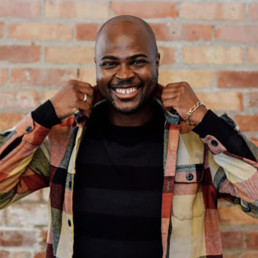
Written by Mahlon Evans-Sinclair
Mahlon Evans-Sinclair is an experienced educator with extensive participation in the fields of learning, professional & personal development, and EDI (Equity, Diversity and Inclusion).
A good rule of thumb is being able to articulate its relevance to yourself.
I often read many stories/recollections that involve identity markers as a descriptor.
I’ve reasoned with the many manifestations of how people use them and figure that whatever the expression, the main reason is to draw attention to something that seemingly has relevance to the story… but does it always…
A former colleague would often tell stories and when an identity descriptor would come up, they would often pause and say ‘and (e.g. race) is relevant to the story here because’… At first it would take me out of the story as I would wonder what the point of drawing attention to it was for, but the more I heard it being said, the more I felt comfortable and more understanding of its intention – It was a signifier for both the storyteller and the audience that the inclusion of this marker was intentional and why.
In thinking about how we use markers in education, sometimes we implicitly state things and expect that others instinctively know what we mean, or we (un)intentionally ‘add weight’ to the meaning of our stories by throwing in unexplained identity markers as though they are adjectives.
Consider for example that one of the students in a class has a learning difference that needs to be taken into account. It makes sense to say, ‘and this status matters here because (it will help with your planning/seating arrangements/conversations with them and their family)’. Consider that the same student happens to be the only non-white student in the class. Would stating that there’s a ‘Black kid with dyslexia’ in the class be helpful in the same way?
It’d be useful to think about what you’re actually intending to state.
– Is the race as important as the learning difference?
– Do the race and the learning difference compound?
– Are there no other ways of describing the student?
You could say that this would be simply solved by knowing and using the student’s name – yes(!) – however, we don’t always do this, especially when retelling a story to an audience who may not have the same level of connection to the subject matter.
So, consider when telling a story that involves an identity marker (such as race, gender, age, sexual orientation, physical or mental difference, etc), add in a clarifier of ‘their identity matters here because…’ and see if it actually does.
More isn’t enough
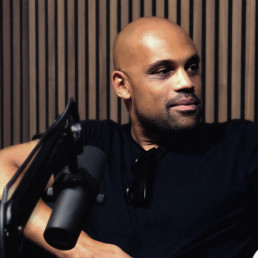
Written by Charles Golding
Charles Golding is a creative director and filmmaker, a disruptor with a passion for change.
CARGO, Charting African Resilience Generating Opportunities, was launched in 2018 to address the lack of inspiring African and African diaspora narratives in education. Since then, awareness has been raised of the bias in representation in the current curriculum.
In the wake of the resurgence of the Black Lives Matter movement in 2020, many groups and organisations have sprung up to address the inequality and lack of diversity in business and education. We cannot be sure whether these organisations were echoing the zeitgeist or capitalising on the moment. Either way, we are now in an unprecedented time where diverse resources and educational tools are available on a scale unimaginable a few years ago. From major publishers, academics and celebrities, it seems many people have thrown their hat into the ring to help address the perceived lack of Black history within our classrooms.
When CARGO began its journey into the world of education, we made a number of conscious decisions that would help define our focus and ambition. As Lawrence Hoo, CARGO co-founder recounts in the BBC documentary The Classroom Revolution: “At school, we weren’t taught white history.” This is an important distinction with the language we use to describe our work.
We choose not to categorise the material we created with the binary simplicity of racial politics. We put language at the heart of our material. For example, we use ‘of African and African Diaspora heritage’ rather than ‘Black’; ‘of European heritage’ rather than ‘white’; ‘enslaved people’ rather than ‘slaves’. Our choice of words help to humanise often dehumanised narratives and define our direction.
Another important distinction is our focus on engagement. We do not want our material to feel like a traditional classroom resources. We approach the creation of CARGO Classroom resources with a desire to create material that will engage, educate and entertain.
Beyond our drive to address the inequality within the secondary school system was a realisation there was a need to energise and enrich the dusty and often antiquated environment of teaching in schools. We understood there was a void beyond racial inequality that spanned generations. The traditional institutions that have governed the distribution of educational material are no longer fit for purpose and have become out of touch with the needs of today’s students. Pupils are demanding change, and all too often, are taking control of their own learning. Due to this demand, we are now developing KS1 and KS2 primary school resources as an addition to the CARGO Classroom KS3 secondary school resources currently available.
No longer can the current frameworks and structures that have governed learning be adequate to fulfil the ideals and aspirations of the coming generations. We want to create materials that would be appropriate for children raised in the age of mass media and gaming. In an environment where information is more accessible than ever before, we know it is important to elevate our material to compete with the ever-changing landscape of digital media.
The CARGO Classroom resources utilise rich, illuminating content from contemporary illustrations, engaging narrative poetry and cinematic videos. We acutely realise the importance of broader representation within teaching and the cross-cultural gains that can be made through a deeper knowledge and understanding. However, the information is only part of the puzzle with the method of delivery and context of the learning being equally as important if we are to inspire engagement and retain learning.
As part of the BBC’s ‘Classroom Revolution ’ documentary, Lawrence visited two children who had been excluded from mainstream education. These students were categorised as hard to reach and subsequently hard to motivate and engage. Their teacher, Rebekah Leese, decided to structure an activity around one of the CARGO Classroom lessons. What you don’t see in the film is as the lesson continues, tutors from other classes gathered in the corridor in amazement as they attempted to look through the windows of the classroom. They couldn’t believe the children stayed engaged for as long as they did. Rebekah remarked: “We are lucky to maintain their concentration for 20 minutes; they were engaged for over an hour.” We now understand one of those students is pursuing history as a subject for further study. Obviously not every classroom will benefit from such a monumental learning experience as a result of CARGO Classroom resources. However, the context and delivery of resources should remain at the forefront of our desire to rejuvenate the landscape of modern learning. It isn’t enough to just supply the material and tell different stories, it’s about how you tell those stories and how we can maximise engagement. We are not interested in ticking boxes; we are here to pull down barriers and broaden ambition.
For more information about CARGO Classroom, please visit www.cargomovement.org/classroom
Being the teacher that I never had...

Written by Craig Weir
LGBTQ+ Educator, Consultant and Safeguarding Lead
People often ask why I became a teacher. The answer – to be the teacher that I never had.
My own secondary school experience was tough. I lived in a small town off the west coast of Scotland where social status was defined mostly by what football team you supported: Rangers or Celtic. My lack of interest in either team made me an outcast to the boys in P.E, leading to me being picked last for all sports and seen as less alpha. It was obvious that the boys quickly assumed that I was strange because I didn’t see football as the most important thing at that point. It wasn’t that I wasn’t interested or good at sports; the assumption was that I was different because I couldn’t participate in the locker room “banter”.
This was the start of the multiple years of being bullied for being a “fag”, “gay boy”, “poof” or “bender”. These words were hammered into me daily from what felt like many and most of the boys. Instead of reporting this, I decided to hide my upset for the fear of looking weak and upsetting my family. It was, in fact, my cousin who spoke up when they witnessed the unkindness of their own friends towards me. When my mother finally asked the school to step in and help, they really could not and did not do much. The school were confined by the section 28 legislation that banned the promotion of homosexuality; I still struggle with this now. Unfortunately, the school did not act with speed or strength, which led me to absorb similar abuse throughout most of my school years. In all honesty, I think I’d struggle to write how I really felt at this time. In fact, this is a time that I have lost as it feels better to have “forgotten” what really happened. What I do know is it does – and did – get better.
On leaving school, I trained in musical theatre at a very famous drama school in central London. The fact that I was moving hundreds of miles away from the pain was comforting. I was a real-life Billy Elliot and finally recognised myself and sexuality in others around me. This eventually led to me working in theatre, television and film with some of the biggest names in the industry. I never thought I was going back to secondary school… ever.
Like others, I found the pressures of work got to me and my love for an industry was being destroyed by the conditions I worked under. I was constantly showing poor health and was “blue lit” to hospital after a suspected brain aneurysm which was in fact stress. I hated my job, the hours, and the fact it was destroying one of my biggest loves – the theatre. I also felt too proud to admit that this wasn’t for me. I was worried that I had failed. Again, I was worried that I would upset others and seem weak.
With the support from my partner and my family. I quit my toxic career and retrained as an English teacher. Why? This went back to the hope that I could support someone in a way that was never available to me.
I now work at a comprehensive school in South London. The school has a large focus on sports and it could be said it’s pretty alpha in many ways: competition is very important.
As an English teacher, I went back into the closet and kept my private life private. Some of my colleagues were aware and encouraged me to be open publicly within the school. For some reason, I just could not do it and I didn’t know why.
I now want you to imagine a Wednesday afternoon. I was teaching Romeo and Juliet and Mercutio has just started the “Young Hearts Run Free” scene in Baz Luhrmann’s movie version. My class was overrunning; another class were waiting at the door ready to come in. It was a busy corridor. As I released my class, the popular girl in year 8 was at the door – strange because I did not teach her. This is the girl that can command the attention of her peers in a breath. I’m sure you know the type. Anyway, she knocks on the door asked loudly:
“Sir, are you gay?”
In all honesty, I was shocked by my reaction and shocked by her direct question. She repeated:
“I said sir, are you gay…?
My reply… “no”.
Why did I reply with this?
I then had to teach my next class with a racing heart, struggling to catch my breath, sweat pouring down my face and barely able to think clearly. I was not prepared for the question about my sexuality. I was not prepared to be transported back into the boy who stood in school feeling terrified of the question that I didn’t know the answer to.
After this experience, I thought for a long time about why I had replied “no”. I was mortified and hurt at my response. Why did I go back “into the closet” after 15 happy years out of it?
My colleagues have been brilliant; my leadership have been even better. They understood the pain and allowed me to speak. They allowed me a safe space to decide what I wanted to do.
This year, I decided to tackle this trauma myself. I was going to try to be more forthright. This started with a quick chat about equality with my year 8 class. When they asked me about my wife, I quickly corrected them and said I had a male partner. None of the students had much of a reaction but, for me, the feelings of worry and trauma came flooding back. However, I knew that this time it was on my terms.
I had started to feel empowered and more authentic. I knew that by being in control, my history and identity could be used as a positive rather than negative. So, I and another colleague decided to run the LGBTQ+ club in school. Doing this with another member of staff made me feel safe and supported. The school honoured the decision to have two members of staff on this club as they knew the support we gave one another was important. I could not have done this without her.
LGBT+ History month came round and, as Heads of Year, we both knew that we’d like to deliver an assembly to our year groups on allyship and the history that came before us. Eventually, this turned into a whole school assembly that was delivered to every year group across the week. Honestly, I was terrified. I was ‘outing’ myself to every student and staff member in the school. Starting with the Equality Act, I informed the students that I was delivering this assembly as a gay man. I could feel myself becoming emotional and I’m sure this was obvious to the students too. I was numb and couldn’t speak anymore but the band-aid was ripped off. My colleague was my hero in this moment: in all 5 assemblies she stepped in and swiftly carried on until I could compose myself to continue.
Every assembly got tougher, despite me thinking they’d get easier. I started to see myself as vulnerable again. As the year groups got older, their reactions became louder – particularly the boys, who presented with a mixture of shock, laughter and smiles. This made me feel exposed but my hope was that my pain would be far less than the gain for the students who needed to hear this.
The assembly was received well. Children I’d never met before were saying hello to me. It was positive.
Was there a negative? Yes. I remember a teenage boy stirred up a small anti-ally party in one of his lessons immediately after the assembly. The teacher, of course, had my back and had him removed immediately. Nevertheless, I remember this more than I remember the positives. Recently, I’ve had an experience of another boy miming certain physical acts that he thinks are related to me. Sadly, both obvious negatives here came from boys, boys that are respected and known by their peers. Whilst this could be another trauma trigger… by releasing my pain and worry, I have realised, I’ve gained strength.
Honestly, I have no idea if my experience or honesty has helped anyone at school. What I do know is that I have helped me. Would I have done things differently? Absolutely. However, when we struggle with pain or trauma, I truly believe we can only do our best in that moment. I have amazing friends and colleagues who have supported me in being honest, transparent, and visible. Hopefully, this visibility will help someone else one day.
Why Don’t We Talk About Intersectionality in Schools?
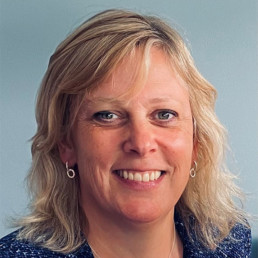
Written by Dr Jo Trevenna
Dr Jo Trevenna has over 20 years' experience of educational leadership from early years to post-graduate level. Her ongoing academic interests centre on Leadership and EEDI. Her company, Potential Education, offers leadership reviews, support and training and EEDI-focused school support.
There can’t be many of us still thinking that human identity is singular. Right? Aren’t we a combination of diverse characteristics that create and impact on our existence? Expectations and assumptions around combinations of characteristics are increasingly illuminated in societies, with light thrown on those who experience multiple discrimination and shade thrown on those who discriminate against those with different combinations of characteristics. The complexity around identity is foregrounded in explorations of intersectional discrimination. Yet intersectional disadvantage is not generally a focus for English schools.
Why?
Is it a lack of understanding and awareness or the lack of external accountability?
The Law
Critical awareness of the vulnerabilities faced by those with exact combinations of identity characteristics was first associated with the legal work of Kimberlé Crenshaw which looked into the discrimination experienced by African-American women in terms of ‘intersecting patterns of racism and sexism’ (Crenshaw 1991, p1243). Crenshaw asserted that anti-discrimination legislation in the United States did not actually protect African-American women because, when making legal claims against an employer, this particular group had to choose between a focus on either their race or gender, even though the discrimination they faced came at the ‘intersection’ of these two identity characteristics.
Section 14 of The Equality Act (2010) recognises the potential for discrimination pertaining to ‘combined discrimination: dual characteristics’ (Legislation.gov.uk 2010). The focus here is limited to direct discrimination against the combination of only two characteristics. More significantly, Section 14 has never, in fact, come into force. It just sits there in provisional status.
As it stands, therefore, the law does not adequately protect against intersectional discrimination and, in terms of English schools, there is no legal imperative to tackle intersectional discrimination.
Publicly Available Data
Published performance table data is hugely significant for schools. The first stage of the high profile ‘school and college performance measures’ website offers only a single-axis approach to pupil data. Some basic intersectional data is available on the ‘Explore Education Statistics’ section of the platform relating to ethnicity and disadvantage, disadvantage and gender, SEN and ethnicity. However, the data remains on cohort numbers and does not provide any information which may indicate the impact of those intersections on pupil academic performance, exclusions/suspensions and attendance. FOI requests can be made and the GOV.UK website also offers the facility for researchers through its new Grading and Admissions Data for England (GRADE) service. This service may be a significant step forward in terms of higher level transparency but it does not provide readily accessible data to the public on intersectional discrimination affecting pupils.
Data revealing the intersectional factors affecting pupils is available to school leaders and governors, local authorities and Ofsted via the ‘Analyse School Performance’ (ASP) secure access platform. Filtering mechanisms enable reports combining specific pupil characteristics, eg: boys with SEN, and scatterplot graphs make it relatively easy to identify patterns of underperformance because of key combinations of protected characteristics thereby highlighting potential impact of discrimination and flagging up need to address. Another school performance document is the Inspection Data Summary Report (IDSR), which is accessed on the secure ASP portal. The IDSR is a key document for Ofsted Inspectors when preparing to inspect a school and informs initial discussions with headteachers. Like the ASP tool, the IDSR does provide schools and Ofsted with a retrospective mini intersectional tool in its coding on scatterplots of the progress and attainment of pupils by binary gender classification and SEN status and deprivation status. However, there is no public access to this data.
To sum up: disadvantages experienced by pupils with specific combinations of identity characteristics in English schools are not readily flagged in publicly published school data. Perhaps Ofsted, which does have access to this anonymised intersectional data via the ASP and IDSR, has the potential to be the driving force in helping schools engage with intersectional discrimination.
Taking a sample of 68 Ofsted Section 5 inspection reports published in a six month period (not including those which inspected an already ‘Good’ school), there are only references to single-axis identity characteristics. In this sample, Ofsted, as the key inspection mechanism for schools, does not engage with the impact of intersectional discrimination on pupils. The lack of referencing in this sample of reports is not surprising given that Ofsted’s School Inspection Handbook only relates identity characteristics on a single-axis framework.
As it stands, then, there is no legal accountability, no easily accessible public data to enable transparent exploration of the impact on pupils and little Ofsted engagement with intersectional discrimination and disadvantage. Right now, without the external accountability structures, it is the choice of school leaders whether or not to adopt an intersectional approach to their schools. Given that most of us agree that identity has multiple components, it is surely time to explore how an intersectional approach can throw light on intersectional disadvantage and discrimination and therefore help schools to tackle it head on despite the lack of an external accountability framework.
On Disability #IDPwD2022
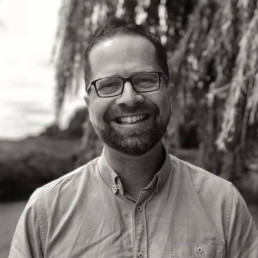
Written by Matthew Savage
Former international school Principal, proud father of two transgender adult children, Associate Consultant with LSC Education, and founder of #themonalisaeffect.
“My own heart let me more have pity on; let
Me live to my sad self hereafter kind,
Charitable…”
(Gerard Manley Hopkins)
In many ways, I have enjoyed my return to face-to-face consultancy, and to the buzz, warmth and joy of human interaction. However, I have also realised something else: on Zoom, I was not disabled. On Zoom, I could still walk and run, swim and cycle. On Zoom, I did not need my wheelchair, crutches or mobility scooter to move around. On Zoom, nobody would have known I was any different.
In recent months, I have been to restaurants with friends and colleagues, and I have developed an interesting habit. As soon as I am seated, I ask that my scooter and crutches are taken away out of my view and the view of others. I do the same when I am speaking to an audience too. Somehow, I seem to think that, if my disability is hidden from view, it will no longer exist.
When I first became ill, the talk was all of diagnosis and recovery. Medics were optimistic, and friends and family still asked that I “stay positive”. However, with time, the medics started to lose hope, and friends and family, not knowing what to say, chose, instead, to say nothing. It feels increasingly like my present has become my future, the two intertwined.
Although often relentless and ablaze, my pain is silent: mixing medication and mind muscle, I try to ensure that nobody knows. Similarly, I have managed to mask my encroaching stammer so far, although I know I will start to lose that battle soon. But people see my inability to walk before they see me; and, therefore, try as I might, it cannot be hidden.
This has presented me with a problem. As my disability becomes my body, I cannot be ashamed of one without being ashamed of the other too. Like many who have survived childhood trauma, I have a lot of shame, but I have realised that I cannot be ashamed of my disability. And that, as long as it is a guest in my house, I must welcome and embrace it as myself and, in so doing, love it too.
#DisabilityAwareness #DisabilityPride

